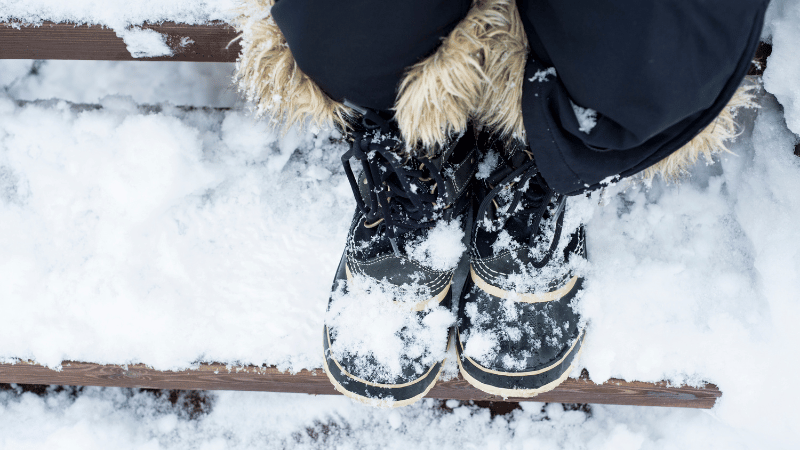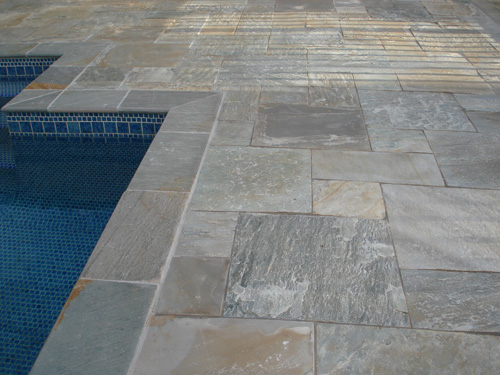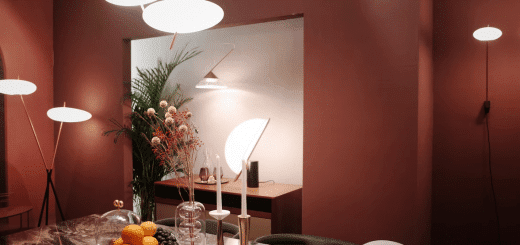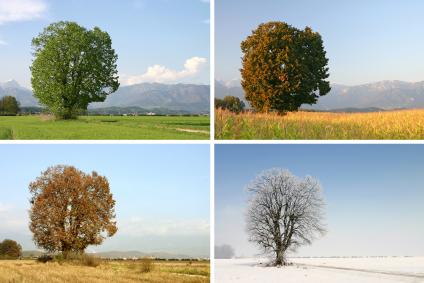How to protect floors from snow and salt

Snow and ice are expected in cold geographical areas. These elements also mean salt will be scattered over walkways to prevent slips and falls. The snow and salt can be easily tracked indoors, thereby causing damage to the hardwood floors. Here’s how to protect the floors from snow and salt.
Firstly, it’s important to know how salt can damage the floors. Tiny salt particles strewn all over the floors become damaging when people step on them. The particles end up scratching the hardwood flooring or finish, leaving behind unappealing nicks and scores.
Moisture from melting snow can also cause significant damage to hardwood floors. The lingering dampness will warp the wood or cause it to buckle. If the wood is exposed to moisture for prolonged periods, moldMold is a type of fungus that grows in damp or humid conditi... More colonies can flourish. Mold takes 24 to 48 hours after water exposure to develop.
Floor Care Tips
When it comes to protecting the floors from snow and salt, the best advice to homeowners is preventionPrevention refers to actions taken to reduce the likelihood ... More. Keeping snow and salt off the floors in the first place is a much more cost-effective and less time-consuming solutionA solution is a homogeneous mixture of two or more substance... More than restoring floors that have become water damaged.
Homeowners should place doormats outside the doorway. Encourage winter guests to wipe their feet on the mats prior to entering the home or place of business. A durable doormat removes large chunks of snow and salt particles. Lay an additional mat inside the property so guests can dry their feet.
Coir doormats withstand moisture, cold, and snowy conditions. While nonslip options will keep the doormat in place as guests wipe their shoes and feet, rubber-backed mats are not advised. Damage to hardwood floors can result when the rubber-backed mats scrape against the wood.
A second key to preventing guests from tracking in snow and ice is to place a shoe rack at the entryway. The bottoms of boots and shoes will be caked with snow and salt particles. Ask guests to remove their shoes when entering the building and utilize the shoe rack.
While the abovementioned tips can prevent the majority of snow and ice from damaging the floors, spots of melted snow and bits of salt can nevertheless appear. Property owners are advised to keep paper towels and rags near the door so they can immediately wipe up puddles.
Even a small puddle of melted snow can damage hardwood floors, if left unaddressed. Failing to clean up salt or snowmelt can leave a film on the floor when the moisture dries. The alkaline residueResidue is any leftover material, such as soot, dust, or che... More is due to the chemicals in the salt interacting with the finish of the floors.
Salt used on roadways contains a high pH, which is similar to the chemicals used to strip hardwood floors of their finish. Due to this reason, homeowners should vacuum salt particles as soon as possible. A broom is not advised, as it can grind salt into the wood.
Winter weather can be damaging to hardwood floors. Property owners are advised to amplify their regular floor cleaning routine during the cold season. Normally cleaning once per week is suitable for warm weather; in winter, increase mopping to three times per week, depending on foot traffic.
In commercial buildings, such as offices or retail stores, consider laying down plastic runners during the winter season. The plastic runners are useful for not only keeping snow and salt off the valuable floors, but preventing guests from slipping, falling, or otherwise injuring themselves.

Wood Damage Restoration
Water damage is a serious problem in homes or offices where hardwood floors are installed, considering moisture quickly destroys porousPorous describes a material that contains small openings or ... More materials, like wood. By following the abovementioned tips, property owners can successfully protect their floors from the detrimental effects of winter snow and ice.
However, if snow and ice still manage to cause warpingWarping is the bending, twisting, or distortion of materials... More and buckling on the hardwood floors, restorationRestoration is the process of returning a property to its pr... More is the next step. Property owners should locate a reputable wood damage restorationRestoration is the process of returning a property to its pr... More company. The crews may be able to salvage the wooden floors using specialized industry techniques.
One of those professional techniques involves the deliberate use of suction. The method known as Injectidry utilizes machinery that efficiently sucks excess moisture out of the hardwood floors. In many cases of water damaged floors, this well-known industry technique can salvage the hardwood flooring.
However, the suction technique is useful only when the moisture has lingered for a short time. If water damage has been allowed to remain for extended periods, then the property owner must face the decision to replace some or all of the wooden panels in the hardwood floor.
What to Do When There is Water Damage
Water damage to the hardwood floors requires immediate attention. When left unaddressed, the moisture can quickly cause the wood to warp or develop moldMold is a type of fungus that grows in damp or humid conditi... More. When you notice water damage in your home or business, contact the professionals for prompt water damage restoration.
Skilled crews of water damage cleanup technicians arrive at your home or business to assess the extent of water damage. They work quickly to minimize the losses, since water damage is known to spread rapidly. Specialists utilize special equipment and proven techniques to remove the moisture.
Standing water is extracted using state-of-the-art water extraction machinery. They place powerful dryingDrying is the process of removing moisture from materials, s... More equipment throughout the affected spaces to ensure quick and thorough dryingDrying is the process of removing moisture from materials, s... More. Experienced techs are also experts in content cleaning.
Snow and salt are not the only causes of water damage. Burst pipes, malfunctioning appliances, natural floods, and rainstorms can leadLead is a heavy metal that can be toxic to humans, especiall... More to devastating cases of water damage to a home or business. RestorationRestoration is the process of returning a property to its pr... More professionals are equipped to clean up water damage from any source, even sewageSewage is wastewater containing biological and chemical cont... More.













We definitely have mats down, but I never would have thought to keep old rags by our shoes. Great idea!